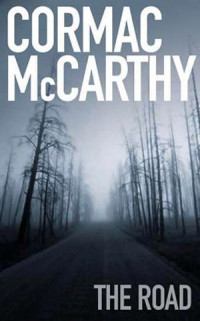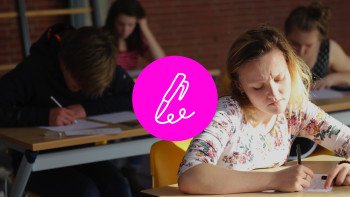Summary
The Road follows a man and a boy, father and son, journeying together for many months across a post-apocalyptic landscape, some years after a great, unexplained cataclysm. The story takes place in the former United States, in the lower Appalachian mountains, where civilization has been destroyed, along with most life; the precise fate of the rest of the earth is not made clear, though the implication is that the disaster has affected the entire planet. What is left of humanity now consists largely of bands of cannibals and their prey, and refugees who scavenge for canned food or other surviving foodstuffs.
Ash covers the surface of the earth; in the atmosphere, it obscures the sun and moon, and the two travelers breathe through improvised masks to filter it out. Plants and animals are apparently all dead (dead wood for fuel is plentiful), and the rivers and oceans are seemingly empty of life. The only non-human organisms they encounter are a dog, some mushrooms and shriveled apples found in an orchard.
The father is literate, well-traveled, and knowledgeable about machinery, woodcraft, and human biology (it is vaguely implied that he is a medical doctor). He realizes that he and his young son cannot survive another winter in their present location, so the two set out across what was once the Southeastern United States, largely following the highways. They aim to reach warmer southern climates and the sea in particular. Along the way, threats to the duo's survival create an atmosphere of sustained terror and tension.
The father coughs blood every morning and knows he is dying. He struggles to protect his son from the constant threats of attack, exposure, and starvation, as well as from what he sees as the boy's dangerous desire to help the other wanderers they meet. They carry a pistol with two bullets, meant for suicide should it become necessary; the father has told the son to kill himself to avoid being captured. (The boy's mother, pregnant with him at the time of the cataclysm, quickly felt overwhelmed by this nightmare world and has committed suicide some years before the story begins.) The father struggles in times of extreme danger with the fear that he will have to kill his son to prevent him from suffering a more terrible fate – horrific examples of which include chained catamites kept captive by a marauding band; captives found locked in a basement and in the process of being slowly cannibalized, their limbs gradually harvested by their captors; and a decapitated human infant being roasted on a spit.
In the face of all of these obstacles, the man and the boy have only each other (the narrator says that they are "each the other's world entire"). The man maintains the pretense, and the boy holds on to the real faith, that there is a core of ethics left somewhere in humanity, and they repeatedly assure one another that they are among "the good guys," who are "carrying the fire."
In the end, having brought the boy south after extreme hardship but without finding the salvation he had hoped for, the father succumbs to his illness and dies, leaving the boy alone on the road. Three days later, however, the grieving boy encounters a man who has been tracking the father and son. This man, who has a wife and two children of his own, invites the boy to join his family. The narrative's close suggests that the wife is a moral and compassionate woman who treats the boy well, a resolution that vindicates the dead father's determination to stay alive and keep moving as long as possible.
Style
Throughout the story McCarthy uses a basic rough style of writing. He often neglects to denote contractions with apostrophes as well as forming run on sentences by not using commas. The story also lacks typical dialogue styles. Conversations lack quotations and the dialogue is often not separated into separate paragraphs. In addition, the novel has no chapters or breaks, and the main characters are referred to merely as "the man" and " the boy.
Feiten
Written by Cormac McCarthy
Titelverklaring
The road, omdat dat het leidmotief in het boek is. het keert steeds terug en alles draait daarom. De vader en zoon reizen samen naar het zuiden, in de hoop dat leven daar beter is (dwz meer warmte)
Omgevingbeschrijving
Door een onbekende oorzaak/ramp is alles op aarde dood, planten en dieren. Het landschap is compleet verwoest. Bomen zijn dood. Het is hartstikke koud, en de sneeuw die valt is grijs. De lucht is donker. Ze hebben weinig bezittingen die ze met zich meedragen in een kar. Vader en zoon hebben 1 pistool met 2 kogels om zich te verdedigen tegen de ‘bloodcults’, mensen die als kannibalen door het land trekken. De bad guys dus. Vader en zoon zijn de ‘good guys,(''they’re carrying the fire; this "fire" is the flame of humanity left alive inside their hearts'')
De moeder, die ten tijde van de ramp zwanger was van de jongen heeft zichzelf van het leven beroofd. met lavaglas (a flake of obsidian p. 60).
Ze komen enkele keren mensen tegen in het boek, een keer een man die door de bliksem is geraakt (?), een keer een groep bloodcults waarvan een gaat plassen (?), deze man staat dicht bij vader en zoon. Vader sist naar de man dat hij niet om mag kijken, als hij dat wel doet zal hij hem doodschieten. De man (bloodcult) probeert hen nog over te halen met hen mee te komen naar de truck van de bloodcults (voor zogenaamd eten). De bloodcult grijpt op een zeker moment de jongen en zet een mes tegen zijn keel waarna de vader hem door zn hoofd schiet en op de vlucht slaat. De andere bloodcults zoeken nog naar hen. De volgende keren ze terug. Hun kar is geplunderd en ze zijn de overblijfselen van de bloodcult die is opgegeten door de andere bloodcults.
Het boekverslag gaat verder na deze boodschap.
Verder lezen











REACTIES
1 seconde geleden
M.
M.
Hij is toch dood gegaan omdat hij een pijl in zijn been geschoten kreeg.
10 jaar geleden
Antwoorden